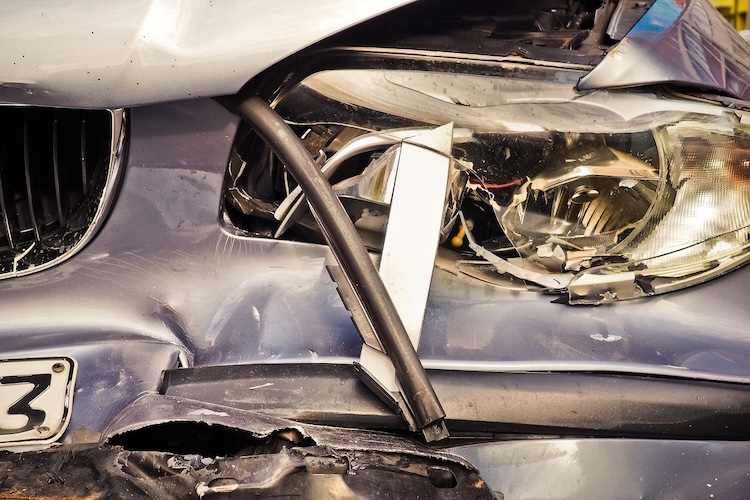Understanding the Complexities of Car Accident Causation

Car accidents are a leading cause of injury and death worldwide, with a multitude of factors contributing to the grim statistics. Understanding the complexities of car accident causation not only requires a multifaceted approach but is also essential for the development of effective prevention strategies. This exploration delves into the interplay between human behavior, vehicular mechanics, and environmental conditions, aiming to shed light on why accidents occur and how they can be prevented. Through a comprehensive analysis of data, expert insights, and case studies, we strive to provide actionable recommendations to enhance road safety for all users.
Human Error and Car Accidents
Human error often lies at the heart of vehicular accidents, with factors ranging from distracted driving to the misjudgment of road conditions. Each case reveals a pattern where attention, decision-making, and reaction times contribute significantly to road incidents. By examining these patterns, we can develop targeted educational campaigns to raise awareness about the importance of attentive driving.
Society's increasingly hectic lifestyle has led to a surge in distracted driving incidents. Mobile phone use, whether for texting, calling, or navigation, takes the driver's focus off the road, increasing the risk of an accident. Efforts to curb this behavior through legislation and technology, like hands-free devices, are continuous yet face constant challenges.
Alcohol and substance abuse continue to be the leading causes of car accident causation. Impaired judgment and slowed reflexes significantly elevate the likelihood of crashes, indicating the need for strict enforcement of laws against driving under the influence and continued public education on its dangers. An injury lawyer can attest to the devastating consequences of drunk driving, making it a critical topic for prevention efforts. It is also essential to note that human error is not limited to drivers but can extend to other road users, such as pedestrians and cyclists. Education on being a responsible road user for all parties involved is crucial in reducing accidents.
Vehicle Maintenance and Safety
Regular vehicle maintenance is critical in preventing car accidents. Mechanical failures, such as brake defects or tire blowouts, can lead to catastrophic results. It is crucial for vehicle owners to adhere to maintenance schedules and promptly address any vehicle alerts or malfunctions.
Advancements in automotive technology such as anti-lock braking systems, traction control, and electronic stability programs have enhanced vehicular safety. These systems need regular check-ups to ensure their proper function, which is essential for accident prevention and safeguarding passengers.
The role of car manufacturers in preventing accidents cannot be overstated. They are responsible for outfitting vehicles with safety features and ensuring their proper operation through recalls and improvements. The dissemination of vehicle recall information and encouraging compliance among car owners remains a challenge to be addressed.
Environmental Factors in Car Accidents
Weather conditions play a significant role in car accident statistics. Inclement weather, like rain, fog, snow, and ice, can impair visibility and reduce tire traction, leading to a higher probability of accidents. Educating drivers on weather-specific driving techniques is essential for prevention.
Poor road conditions, such as potholes, lack of signage, and inadequate lighting, are environmental factors contributing to accidents. It is pivotal for municipal authorities to maintain road infrastructures and make necessary improvements to enhance driver safety.
Urban planning and traffic control measures also affect the incidence of car accidents. The design of intersections, the synchronization of traffic lights, and the implementation of speed limits are all factors that, when optimized, can reduce accident rates and enhance the flow of traffic.
Legislation and Law Enforcement
Traffic laws are designed to maximize safety on the roads. Adherence to these laws is enforced by traffic officers, whose presence serves as a deterrent to traffic violations. Regular review and adaption of laws to current trends and technology are necessary to maintain their effectiveness.
Stringent legal consequences for dangerous driving behaviors such as speeding, reckless driving, and not wearing seat belts are essential. These enforcement measures signal the seriousness of such actions and their potential to cause harm, thereby encouraging compliance.
Educational programs for new drivers, coupled with refresher courses for experienced drivers, can ensure ongoing awareness of traffic laws and driving best practices. Such initiatives can contribute to a culture of safety and responsibility on the roads.
Technological Innovations in Traffic Safety
Technological innovations in vehicle design, such as automatic emergency braking, lane departure warnings, and backup cameras, have introduced new layers of safety for drivers and pedestrians alike. It is crucial to understand and promote the proper use of these technologies to fully benefit from their potential to prevent accidents.
Smart traffic management systems utilize data analytics and artificial intelligence to optimize traffic flow and reduce congestion-related incidents. These systems can adapt to real-time conditions, providing both immediate and long-term benefits to road safety.
Connectivity between vehicles, known as Vehicle-to-Vehicle (V2V) communication, promises a future where cars can inform each other of their speeds and movements to avoid collisions. Promoting the adoption and standardization of such technologies could lead to a significant decline in accidents.
The Role of Driver Education
Driver education serves as the foundational tool for cultivating safe driving habits. Comprehensive driver's education programs that emphasize defensive driving and the potential consequences of risky behavior hold the promise of ingraining safety-mindedness in new drivers.
Advanced driving courses, which sometimes offer hands-on experience in dealing with emergency situations, can prepare drivers to handle unexpected road events better. Encouraging motorists to take such courses could enhance their preparedness and reduce the likelihood of accidents.
Parental involvement in teaching teenagers to drive responsibly cannot be overstressed. Parents are often the first driving instructors for their children and their approach to road safety significantly influences the driving habits of the next generation.
Post-Accident Responses and Analysis
The immediate response to car accidents is vital for the aid of those involved and the prevention of secondary incidents. Rapid and efficient coordination between emergency services can mean the difference between life and death and mitigate the accident's impact on overall traffic.
Investigating car accidents thoroughly helps to identify their causes and prevents future occurrences. This requires the collaborative efforts of traffic enforcement agencies, legal teams, and accident investigators, utilizing data analysis and forensics to decipher the sequence of events leading to the accident.
Learning from accidents through shared reports and case studies enables the continual improvement of safety measures. Integrating these learnings into public policy, driver education, and vehicle design ensures that each accident contributes to a larger body of knowledge aimed at prevention.

In conclusion, understanding the complexities of car accident causation is a crucial step toward implementing targeted prevention strategies. By addressing human behavior, vehicle maintenance and design, environmental factors, legislation and law enforcement, technological innovations, driver education, and post-accident responses, we can work towards reducing accidents and promoting road safety for all users.



